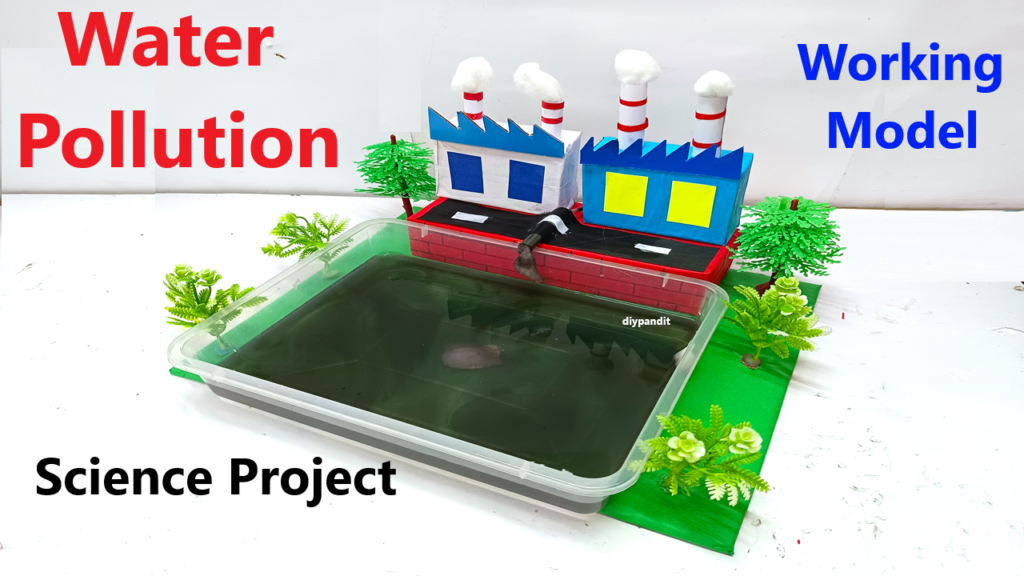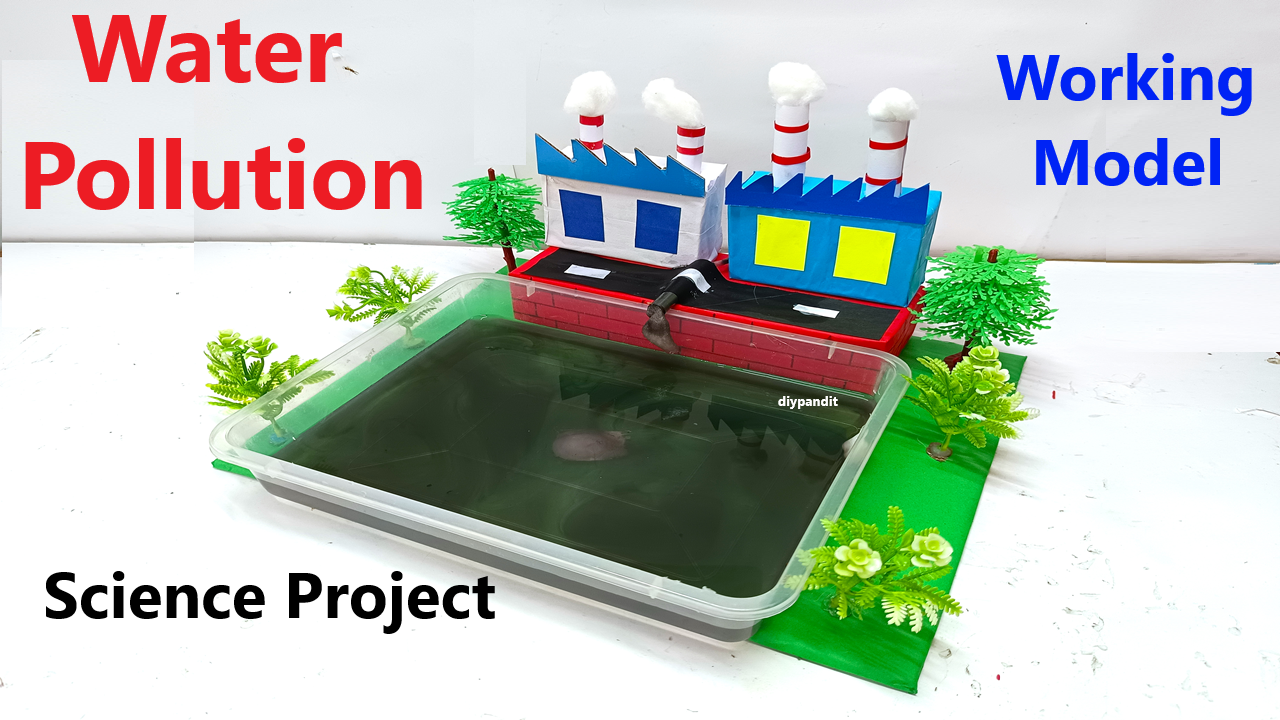Here’s a plan for your water pollution working model that uses syringes to simulate pollutant discharge, a factory model, and a plastic tray as a water pond:

Materials
- Plastic tray: Acts as the pond or water body.
- Syringes: To inject colored “pollutants” into the water, simulating factory waste discharge.
- Factory Model: You can use a small cardboard box, decorated with markers and paper to look like a factory.
- Colored Water (for pollutants): Mix water with food coloring or use natural dyes to represent different pollutants.
- Small tubes or pipes: Connect syringes to simulate pipes coming from the factory to the water body.
- Vegetable oil (optional): Represents oil spills.
- Aquatic Plants or Toy Fish (optional): Demonstrates the effect on marine life.
Assembly Steps
- Set Up the Pond: Place the plastic tray as your water body. Fill it with clean water and place any plants or fish toys inside.
- Construct the Factory: Position the factory model next to the plastic tray, attaching syringes to simulate pipes that will inject pollutants into the water.
- Connect the Pipes: Attach a small tube to each syringe and position them so that they enter the water tray, appearing like discharge pipes from the factory.
- Prepare Pollutants: Fill each syringe with different colors of water to represent various pollutants (like blue for chemicals, red for industrial waste, etc.). You can also add a syringe filled with oil to simulate an oil spill.
- Demonstrate Pollution: Press the syringes to release “pollutants” into the water, showing how industrial waste flows into water bodies.
Explanation
- Explain how each color represents a different type of pollutant and how pollutants affect water quality and aquatic life.
- Show how the colored water spreads through the tray, simulating the dispersal of pollutants in a water body.

